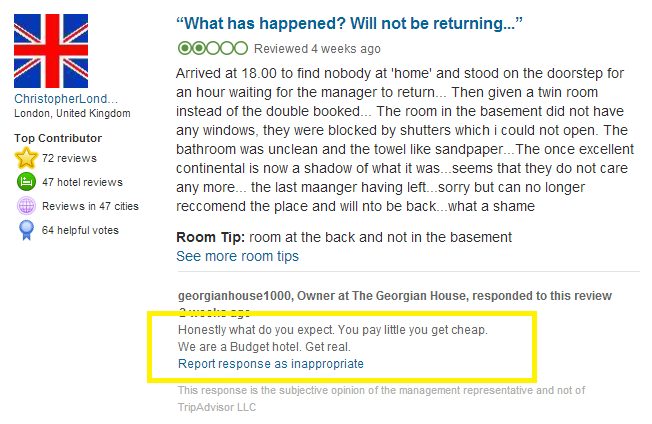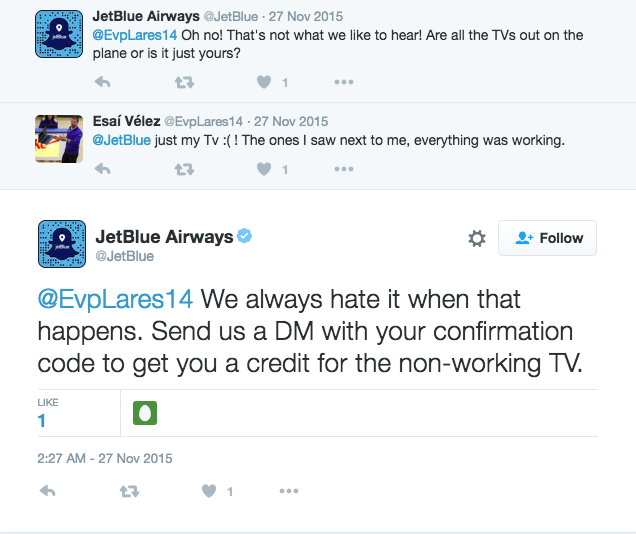
You’re scrolling through your business’s Facebook and Yelp accounts when you see a long, scathing one-star review from an unhappy customer. You notice that it’s gaining more attention than the positive reviews written below. Your choice in how you respond to this customer, as well as how you encourage customers to leave reviews, can influence your business performance.
It’s no question that customer reviews are important in helping other potential customers make decisions. Read more to learn about how to respond to negative customer reviews and increase positive reviews.
How to handle the bad reviews
How not to respond:

How to respond:


As a business, you want to make sure that you provide the best experience possible to your customers; the more you work to resolve the issue, the happier a customer will be. Here are some points to consider while writing these responses:
Publicly apologize. You will want to acknowledge the issue and apologize for their negative experience. A public apology will not only make the customer feel heard, but will show potential customers that you are concerned with the customer experience.
Clarify, if necessary. If you believe that the customer’s review is an inaccurate representation of what happened, clarify certain points in a non-accusatory way. You want to make sure the customer understands the facts of a situation.
Avoid defensive language. Not only will a defensive reaction leave a bad impression on your customer, but it will garner negative attention from users. Instead, remain humble and professional, especially in the face of a review charged with emotion.
Privately resolve the issue. Whether you want to provide a replacement product or a discount on the next service, provide the customer with a phone number or email so you can further talk about how to resolve the issue.
How to handle the good review
When customers have a positive experience with your business, you’ll want them to leave a positive review. There are several actions that you can consider when encouraging customers to write a positive review.
Create accounts on review sites. You want your business to be accessible on these websites to current and potential customers. Fill out all of your information and make your business accessible online. The more information, the better your online customer experience.
Watch your language choice. While Google encourages businesses to remind customers to leave a review, Yelp will actually penalize businesses for doing so. Instead of “asking” for a “review”, try neutralizing your ask by “inviting” customers to provide “feedback.” To avoid directly asking for a review, a simple “Find Us on Yelp” message will do the trick.
Share positive reviews on your website and social media. When consumers love your product, make a conversation out of it! Share how much your customers love your product -and attract new customers along the way.
Increase your organic rankings with reviews
People love reading reviews. In fact, the vast majority of consumers rely on reviews to inform their decisions. When reviews play such a large role in consumer decision making, you’ll want to use this to your advantage. By encouraging reviews and incorporating Google Review Stars into your search results, you’ll see search engines and consumers alike favoring your products.
